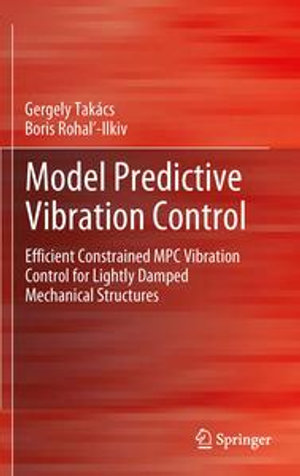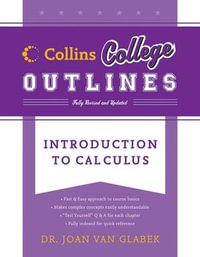
eTEXT
Model Predictive Vibration Control
Efficient Constrained MPC Vibration Control for Lightly Damped Mechanical Structures
By: Gergely Takács, Boris Roha?-Ilkiv
eText | 5 March 2012
At a Glance
eText
$369.01
or
Instant online reading in your Booktopia eTextbook Library *
Read online on
Desktop
Tablet
Mobile
Not downloadable to your eReader or an app
Why choose an eTextbook?
Instant Access *
Purchase and read your book immediately
Read Aloud
Listen and follow along as Bookshelf reads to you
Study Tools
Built-in study tools like highlights and more
* eTextbooks are not downloadable to your eReader or an app and can be accessed via web browsers only. You must be connected to the internet and have no technical issues with your device or browser that could prevent the eTextbook from operating.
ISBN: 9781447123330
ISBN-10: 1447123336
Published: 5th March 2012
Format: ePUB
Language: English
Publisher: Springer Nature
You Can Find This eBook In
Non-FictionEngineering & TechnologyElectronics & Communications EngineeringElectronics EngineeringAutomatic Control EngineeringMechanical Engineering & MaterialsMechanical EngineeringTechnology in GeneralEngineering in GeneralReference, Information & Interdisciplinary SubjectsResearch & InformationInformation theory
Cybernetics & Systems TheoryMathematicsApplied MathematicsMathematical ModellingMaterials ScienceMechanics of SolidsDynamics & VibrationLibrary & Info SciencesLibrary & Information ServicesEnergy Technology & EngineeringElectrical EngineeringSciencePhysicsClassical MathematicsComputing & I.T.Computer ScienceArtificial IntelligenceCalculus & Mathematical AnalysisNumerical Analysis
This product is categorised by
- Non-FictionEngineering & TechnologyElectronics & Communications EngineeringElectronics EngineeringAutomatic Control Engineering
- Non-FictionEngineering & TechnologyMechanical Engineering & MaterialsMechanical Engineering
- Non-FictionEngineering & TechnologyTechnology in GeneralEngineering in General
- Non-FictionReference, Information & Interdisciplinary SubjectsResearch & InformationInformation theoryCybernetics & Systems Theory
- Non-FictionMathematicsApplied MathematicsMathematical Modelling
- Non-FictionEngineering & TechnologyMechanical Engineering & MaterialsMaterials ScienceMechanics of SolidsDynamics & Vibration
- Non-FictionLibrary & Info SciencesLibrary & Information Services
- Non-FictionEngineering & TechnologyEnergy Technology & EngineeringElectrical Engineering
- Non-FictionSciencePhysicsClassical Mathematics
- Non-FictionComputing & I.T.Computer ScienceArtificial Intelligence
- Non-FictionMathematicsCalculus & Mathematical AnalysisNumerical Analysis























